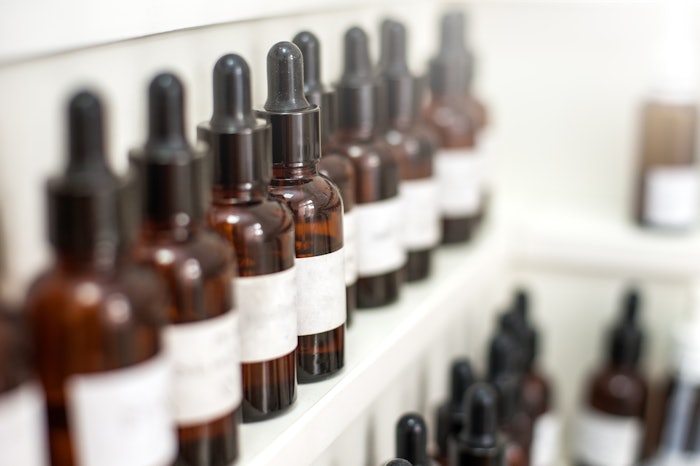
Among evolving regulatory developments in the world, Europe’s regulatory landscape is currently changing more than ever with the upcoming EU Chemicals Strategy for Sustainability (CSS) as part of the EU Green Deala—some might say even more than compared to the introduction of REACH (Registration, Evaluation and Authorization of Chemicals) as chemicals legislation in Europe in 2006. More than 80 regulatory measures are proposed, including a revision of REACH, a revision of CLP (Classification, Labelling and Packaging) which was recently already adopted with the introduction of new hazard classes, such as e.g. endocrine disruption. Furthermore, the CSS develops concepts such as the general risk approach, which implies stricter and faster restrictions on existing and new hazard classes for chemicals used in professional and consumer goods, the essential use concept as a form of derogation of the generic restrictions, mixture (toxicity) assessments and the “safe and sustainable by design” concept as a guidance for future chemical innovation. Overall, many new safety and sustainability assessments will be included in the upcoming regulations with the implementation of the Green Deal and its Chemicals Strategy for Sustainability (CSS).
 Annika Batel, Ph.D.
Annika Batel, Ph.D.
Goals & Investments
The ambitious goals of the EU Commission need to be supported and the F&F industry is fully committed to protect human health and the environment. We as F&F industry strive for safe & sustainable fragrances with a responsible sourcing and our focus is already very advanced in terms of safety and sustainability. The innovation and development of new fragrance ingredients is already based on thorough safety analysis focused on the use and application of the ingredient, ensuring that new molecules entering the market will comply with the newest safety standards. We are already today preparing our existing and new portfolio on the upcoming regulatory changes due to the CSS by proactive testing on new hazard classes and including new screening tests in the innovation of new fragrances, e.g. for detection of endocrine disrupting chemicals. The F&F industry continuously invests in developing innovative new substances and has been steering its portfolio based on sustainability criteria since many years. The IFRA-IOFI sustainability team aligns on the most important sustainability aspects for our industry, e.g. carbon footprint, sustainable raw material sourcing, deforestation and biodiversity. Sustainability measures such as reduced carbon footprint by using renewable raw materials as feedstock is also already in place, making the manufacture of fragrances even more sustainable. The concept of life cycle design is already reflected in the design of fragrance ingredients being biodegradable to ensure low environmental footprints. We are actively participating in the development of EU Commission's ‘Safe and Sustainable by Design’ concept to help shaping this important framework to a workable guidance for innovation and the development of alternative fragrances. Within IFRA, we will develop an overarching F&F case study analyzing the Safe and Sustainable by Design concept for fragrances used in cosmetics and detergents. Thus, the ’safe and sustainable by design’ concept, which is a core measure within the CSS, is already very advanced within the F&F industry.
 Sector-specific regulations with specific knowledge of application and safety are key for safe and sustainable products.Adobe Stock
Sector-specific regulations with specific knowledge of application and safety are key for safe and sustainable products.Adobe Stock
Possible Obstacles
However, some of the regulatory changes within the Green Deal and the CSS might also pose risks to the F&F industry. Fragrances could be banned or restricted based on their hazardous properties, whether they cause a risk to human health and the environment or not. Proposed generic bans and restrictions of fragrances in consumer products and phase-out of substances of concern, even if they pose no significant risk to public health or the environment, could put innovation strength and competitiveness of European companies at risk while disregarding the benefits fragrances bring to society. For instance, the focus on hazard classes that were handled very safely, e.g. skin sensitization, might not lead to a better protection of human health. Scientific data of academic dermatologist show a downward trend of allergic skin reactions due to improved safety standards for fragrance allergens. Thus, in this context the need of improved risk management is not given. The F&F industry is not against strengthening regulatory frameworks, however, regulatory decisions should be based on sound scientific data, and chemical risks managed by considering hazard and exposure.
Some of the regulatory changes within the Green Deal and the CSS might also pose risks to the F&F industry.
The ‘no data no market’ concept as well as the ‘One Substance One Assessment’ approach, meaning that collected data on hazard and risk of a chemical should be shared between different legislations, will also help in improving the overall chemical risk assessment. However, the existence of different legislations has its purpose: Every application in its form is specific and needs specific focus. The exposure to human and environment is usually very different in various applications. Taking this into consideration, a horizontal transfer of the proposed and developed measures might not lead to a safer and better regulation. Sector-specific regulations with specific knowledge of application and safety are key for safe and sustainable products.
Final Thoughts
If we as a society want to meet the challenges posed by the CSS as well as the other upcoming transformations that lie ahead of us–climate neutrality, circular economy and digitalization–a robust "Transition Pathway" is needed that integrates the entire transformation effort of our industry into an overall approach. This was recently discussed and agreed on within the ‘Antwerp Declaration for a European Industrial Deal,’ a joint industry declaration which was also signed by the F&F industry to support and jointly tackle the transformation challenge. According to Ceficb, the declaration outlines concrete actions to strengthen the European Industry, ‘marking the onset of the implementation of the European Green Deal.' Overall, the F&F industry supports the aims of the EU Green Deal and its Chemicals Strategy for Sustainability–a better protection of human health and the environment. However, we advocate for a science-based and innovation-driven development of the regulatory framework to maintain the competitiveness of the European fragrance industry.
Footnotes
ahttps://commission.europa.eu/strategy-and-policy/priorities-2019-2024/european-green-deal_en
bhttps://cefic.org/media-corner/newsroom/antwerp-declaration-for-a-european-industrial-deal/










